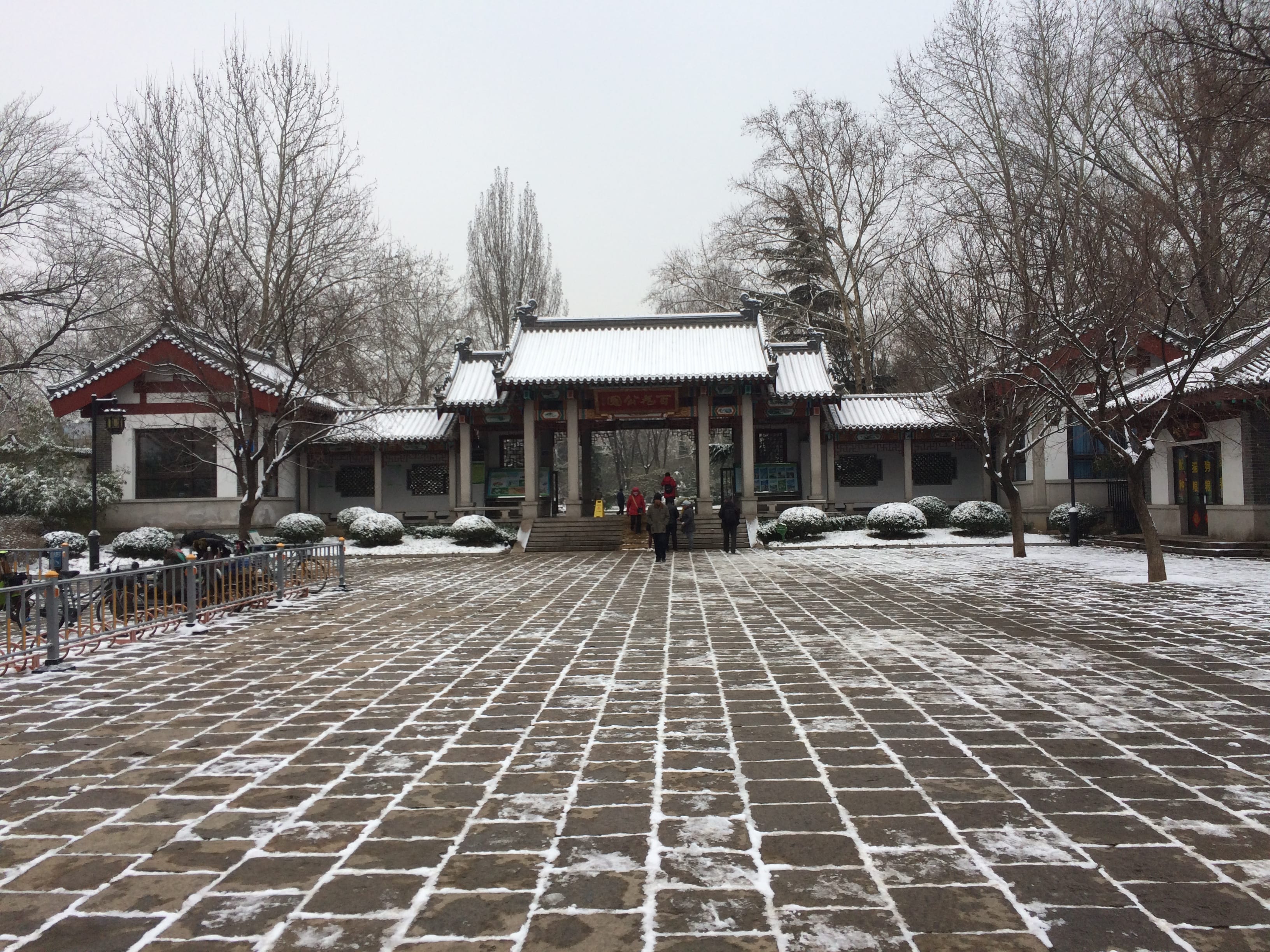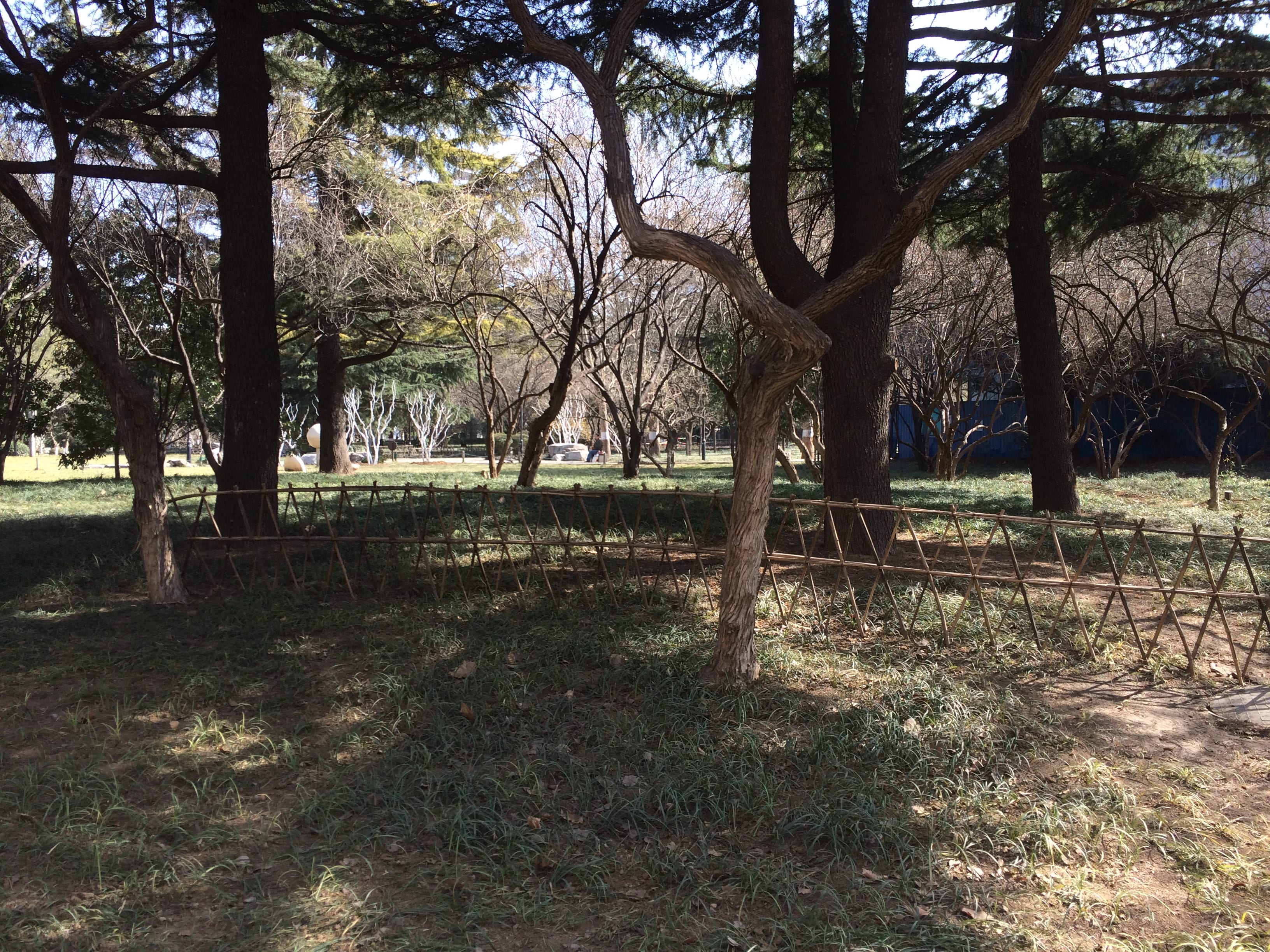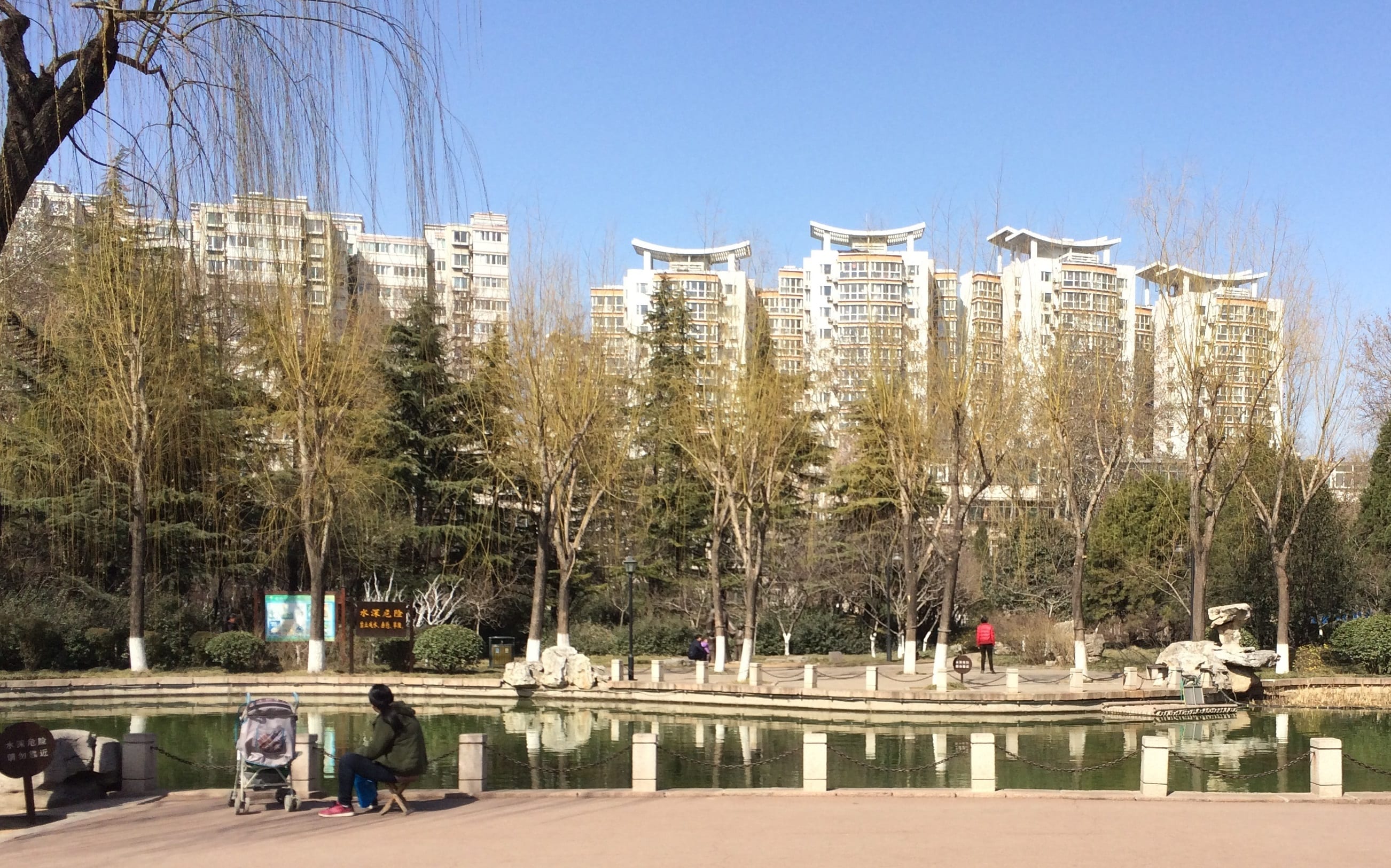Believe it or not, my time in Jinan is running down. I’ve decided to use my next few posts to write about three places that have been integral to my encounter with the city. I’ll focus on the people who inhabit and traverse them and the intersection between these slices of urban space, Jinan as a whole, global issues, and my ostensibly obscure (sike) dissertation research.
At some time in the past I might have said that we live across the street from the tomb of Min Ziqian, a disciple of Confucius and a model of filial piety who lived in the 6th century B.C. Min Ziqian is the hero of a Cinderella-like story, with a couple major differences: he was a son mistreated by his stepmother, instead of escaping his hard life through magic he won over his stepmother by his forbearance (motivated by a sense of duty to his father), and he never met a fairy godmother, only Confucius (not a bad consolation prize). Now, however, this run-down memorial and collection of steles is a sideshow to the impressive 1,900,000 square foot Baihua (Hundred Flowers) Park which it abuts.

The West Gate of Baihua Park
I have walked through Baihua Park not a few times. It is the path I take to both the Provincial Library and the bus stop for my trips to the Provincial Archives (both of which I wrote about some time ago.) I should give credit to one of my elderly neighbors who pointed out to me that cutting through the park would be faster than walking around it. It may make only a few minutes’ difference, but it is a far more pleasant route. I enjoy the park’s flora and fauna but also my human companions, whom I can observe – unlike on the bustling morning streets – without having to worry about being run down by some combination of cars, bicycles, mopeds, and even segways.
My favorite fixture of the park in the morning is a pack of middle-aged, power-walking women. I often wish I knew more about the social dynamics of the group. It is obvious who the leader is: her vigorous elbow-swinging marks her out, as does her monopoly of the handheld CD player whose techno beats provide the sound track for their exercise and my curiosity.
Like me, however, these women are not here to stay. There are many people like us, for whom the park is the most convenient path from A to B. There are many others, however, for whom Baihua Park is itself a destination to be enjoyed at length. Fittingly – given the park’s proximity to a paragon of filial piety – many of these are retired people. They entertain themselves in all manner of ways throughout the premises. Some are engaged in individual exploits, like water calligraphy or learning an instrument. Others come as groups, singing in a chorus or practicing taiqi.

Can you spot the saxophone player through the trees?
Whether China has had/has/will have a true “civil society” is a question that has vexed China-observers of all stripes. A morning stroll through the park goes some way toward obviating this question. People are out in a public space enriching their lives as individuals and groups. Western perceptions of China as restrictive and diseased begin to dissolve in this space that feels carefree and healthy.
One gets a similar feeling watching the other major group of park patrons: young children. These two groups often come hand-in-hand (literally), with grandparents keeping an eye on their young charges, presumably while the parents are off at work. For the children there are rocks and play structures to clamber over, stray cats to feed, and plenty of fresh air to breathe…some days at least.

On clear, blue-sky days the park bustles with activity. As the pollution levels inch higher, though, the crowds thin out. China’s pollution problems are well-known. Jinan is susceptible to dangerously high levels because of its topography. Pollution can only affect our daily lives so much, though – the show must go on. But not at outdoor leisure sites like Baihua Park. Here, people can vote with their feet, and their physical presence or absence is a daily referendum on the state of the environment.
I do not know how much the caretakers who gather around the jungle gyms discuss atmospheric conditions. I am quite sure, however, that the toddlers who roam the park have given hardly a thought to the responsibilities they will bear as the children of a gilded generation. Now, these children enjoy the benefits of the (recently relaxed) family planning policies of recent decades: not only do their grandparents and parents have more than ever to bequeath to them, but it does not have to be split so many ways. Likewise, though, the duty of caring for these elders.
Baihua Park renders the problems of environmental damage and an aging population tangible. It is a space that educates about the relationship between social activity and the environment and the reciprocal ethical duties binding one generation to the next. These issues are familiar to me as an American, of course, albeit in less dramatic form. This familiarity makes me question whether Baihua Park is, for me, more of a window into the lives of others or a mirror to my own. This uneasiness is natural, I suppose. After all, I’m just passing through.
2 responses